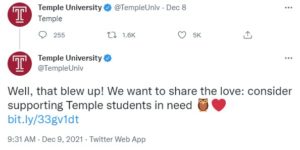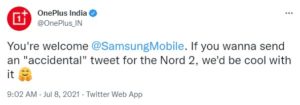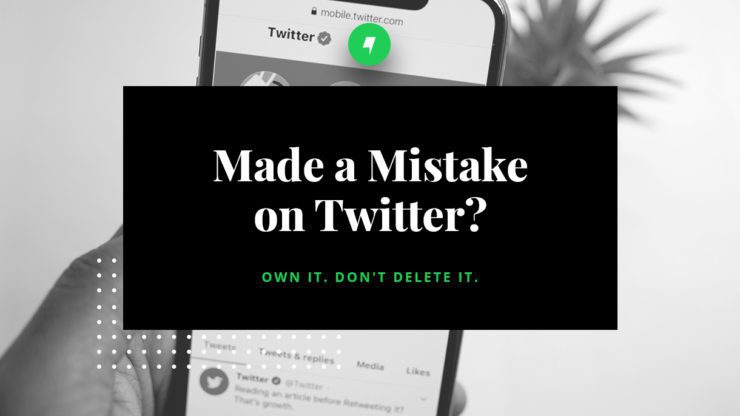Since 2016, there have been rumors that Twitter will add a much asked for “edit” option. However, it’s clearly not a priority for the company. The inability to edits tweets once they’re posted isn’t usually an issue for non-public figures. Just delete and tweet again.
However, for organizations or public figures with a large following, deleting a mistake isn’t always a great option. The better move is to own the mistake and address or correct the issue in a timely fashion.
This kind of ethical behavior helps an organization provide accountability, transparency, and fosters trust in the brand.
According to internet live stats, more than 500 million tweets are posted each day (or 200 billion per year). Of those tweets, one can find many with incorrect information, spelling and grammar mistakes, and other errors, some more detrimental than others. Most matter very little.
For larger organizations that rely on Twitter as an important means of communicating with audiences, correcting a mistake can be an art.
Following are two examples of different approaches to responding to a mistake on Twitter.
In December, Temple University’s official Twitter account made a mistake by posting an unfinished draft via their social scheduling platform. They simply tweeted “Temple.” It quickly went viral and there was no going back.

The post received more than 1,000 retweets, 570 quoted tweets, and 5,000 likes.
Temple decided not to delete the post and instead took ownership of their mistake, including with local media, and leveraged the popularity of their mistaken post with a response that encouraged some positive action.

Another example, earlier in 2021, is a mistaken tweet made by an international cell phone manufacturer, OnePlus India, when they posted a tweet promoting Samsung, a competitor. Who knows how this happened, but it did and it went viral quickly.

Unlike Temple, OnePlus India deleted the post, even after it was shared and retweeted hundreds of times. Negative backlash quick ensued. Eventually OnePlus India issued a response tweet (though never reposting the original mistake) admitting to their mistake and making light of it by engaging their competitor.

While Samsung never acknowledged the tweet, the negative hoopla around OnePlus India died down shortly after the second tweet.
The takeaway here is that with the fast-paced environment of Twitter it’s better to own your mistakes and move on. But also take a good look at your organization’s social posting process and make appropriate adjustments to ensure the same mistake doesn’t happen again.
Posted In Digital Strategy & Social Media
 Veronica Mikitka Reed
Veronica Mikitka Reed 